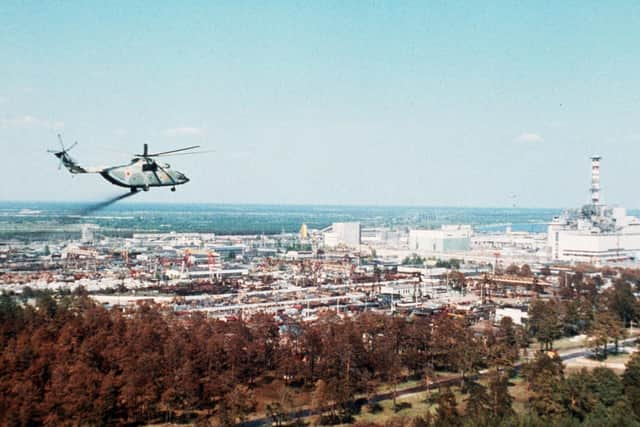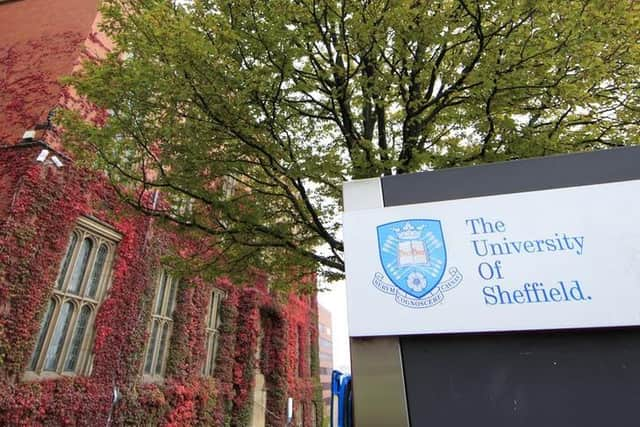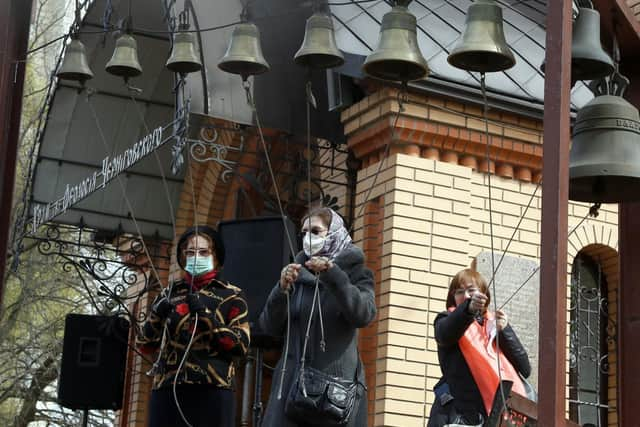University of Sheffield scientists to help clean up waste from 'world's worst' nuclear accident
On April 25 and 26, 1986, arguably the worst nuclear accident in history unfolded as a reactor at a nuclear power plant exploded and burned. More than 30 years on, scientists estimate the zone around the former plant in Chernobyl will not be habitable for up to 20,000 years.
Now a team of scientists from the University of Sheffield have developed an innovative method of using ultrabright x-rays to help understand some of the most dangerous materials left behind inside the nuclear reactor in northern Ukraine.


Advertisement
Hide AdAdvertisement
Hide AdScientists say the revealing findings - which are the most “detailed results” into the chemical makeup of the radioactive materials inside the plant’s melted core to date - could “pave the way” to safely remove hazardous waste from the site and help prevent future nuclear disasters.
Dr Claire Corkhill, the project lead, from the University of Sheffield, stressed the urgency to the research as until now only a very limited number of samples have been analysed by scientists round the world. This is because the most dangerous materials that remain inside Chernobyl are so hazardous, hampering efforts to safely contain or remove the materials from the disaster zone.
Dr Corkhill, told The Yorkshire Post: “This is such a big breakthrough because it opens up a world of possibilities to develop a deeper understanding of some of the most dangerous materials that still remain in Chernobyl.
“These hazardous materials are so dangerous that until now nobody has been able to analyse them in great detail and this is hampering efforts to decommission the site. Our study has found a safe way of doing this.”


Advertisement
Hide AdAdvertisement
Hide AdAs part of the research scientists studied simulant Chernobyl material - created using facilities at Sheffield, with two of the world’s brightest microscopes called x-ray synchrotrons in Switzerland and the USA. Here, they were able to measure very small samples of their material and identify uranium-containing features that were one twentieth of the size of a human hair.
By building 2D chemical images of these uranium features, the team were able to reconstruct the timeline of events that occurred in the moments immediately after the accident, during the formation of the melted down nuclear fuel.
Dr Corkhill, a Research Fellow and Reader from the insititutes department of Materials Science and Engineering at the University of Sheffield, said the method could be used to safely analyse real samples from Chernobyl like “never before”.
“Like a forensic analysis of a crime scene, the chemical analysis...allowed us to piece together the last moments of the Chernobyl nuclear fuel as it melted together with other components in the reactor to form a volcanic-like lava,” said Dr Corkhill.


Advertisement
Hide AdAdvertisement
Hide AdDr Corkhill said the new research helps shine a leading light on how nuclear fuels behave in accident scenarios which will help in future radioactive material clean-up missions.
"Our study... paves the way for analysis of real Chernobyl and Fukushima nuclear melt-down fuels," said Dr Corkhill. "Using such small samples will drastically lower the hazard associated with their analysis and opens up extremely exciting possibilities to support the clean-up operation."
The study, Safely probing the chemistry of Chernobyl nuclear fuel using micro-focus X-ray analysis, was published in the Journal of Materials Chemistry A.
__________


Support The Yorkshire Post and become a subscriber today.
Your subscription will help us to continue to bring quality news to the people of Yorkshire. In return, you'll see fewer ads on site, get free access to our app and receive exclusive members-only offers. Click here to subscribe.
